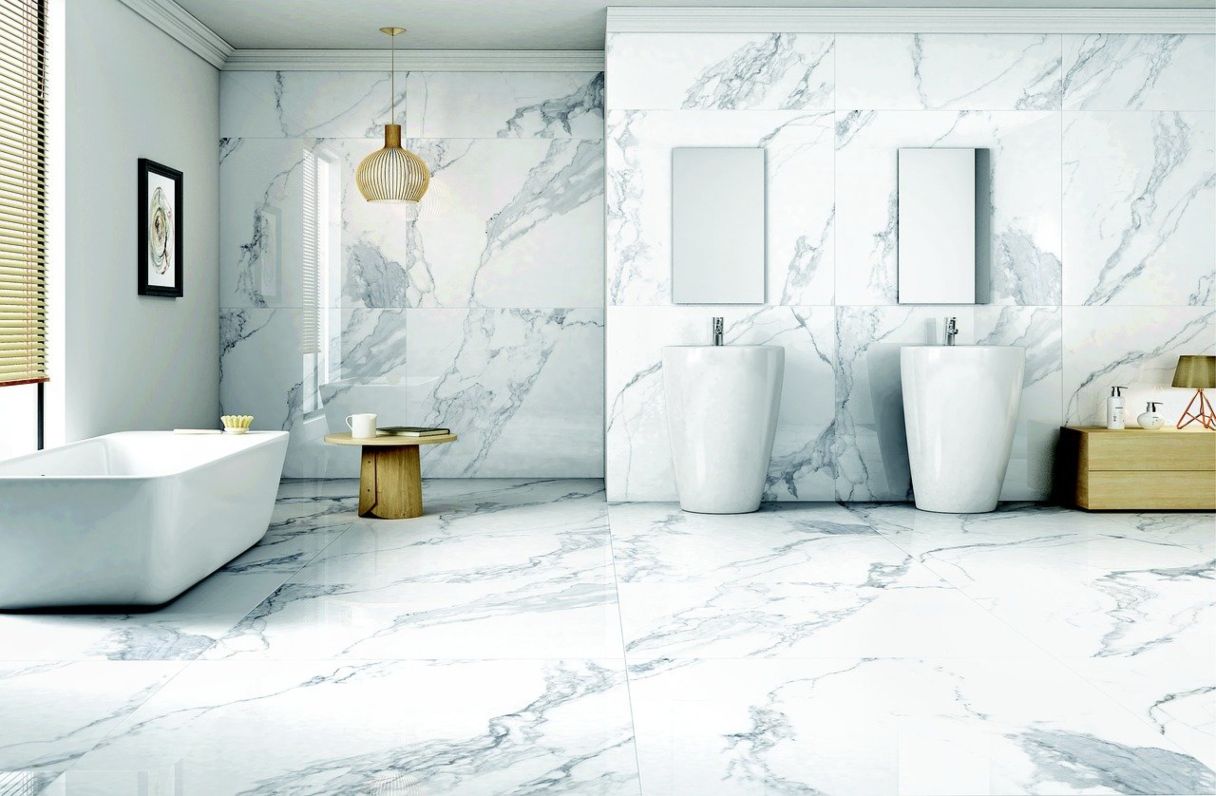Sign up today!
Sign up today!

Many people consider porcelain and ceramic tiles to be the same and use the terms interchangeably. Part of this is due to their undeniable resemblance. Both types of tiles are also crafted using a similar procedure, but a few similarities don't mean they’re the same. Certain factors make ceramic and porcelain tiles different from each other. Here's a tile comparison to help you better understand the difference between porcelain and ceramic.
Here’s a look at what you need to know about ceramic and porcelain tiles before purchasing any for your home:
A key difference between ceramic and porcelain is the former is made by burning natural red, white, or brown clay at high temperatures. The glaze is applied once the water is reduced from the clay and your ceramic tiles are ready.
In contrast, porcelain tiles are made using a specific type of clay, feldspar, and finely ground sand in the mixture. Compared with ceramic tiles, porcelain tiles are made at very high temperatures, which makes them more solid and durable.
Another difference between porcelain and ceramic is porcelain tiles absorb less than 0.5% water content compared with ceramic tiles, which absorb around 3-7% water content. Ceramic tiles are more prone to warping and cracking.
Yet another difference between porcelain and ceramic is porcelain tiles are typically less porous than ceramic tiles and absorb less water, which makes them denser and more durable. Their installation is perfect in places that receive heavy foot traffic. However, this doesn't mean ceramic tiles are any less valuable. Ceramic tiles may not be as hard-wearing as porcelain, but they’re less brittle and suitable for DIY workers.

When comparing ceramic vs. porcelain floor tiles, pay attention to their Porcelain Enamel Institute ratings, also known as PEI ratings. These ratings help determine the type of tile that will suit your home. These ratings range from 0 to 5. Below is the description for each number:
Ceramic has a PEI rating of 3 or 4, while porcelain has a rating of 3 to 5.
If you have a limited budget and want something durable, ceramic tiles vs. porcelain floor tiles are the best solution. Not only are these inexpensive, but you don't have to compromise on style. However, if the selected installation area is going to be under immense foot traffic, you should go with porcelain tiles. They are expensive but will keep you safe from damage or unexpected situations.
Now that you know the differences between ceramic and porcelain tile, you must be looking for an excellent place to get the ones you like. If so, there's no better place better than the Greenwood Plaza. We have a vast collection of ceramic and porcelain tiles, and you can select the one that best suits your interests and building decor. Moreover, our team has years of experience and will guide you toward the best product. If you want ceramic or porcelain tiles or tile tools, don't wait. Contact us now!
